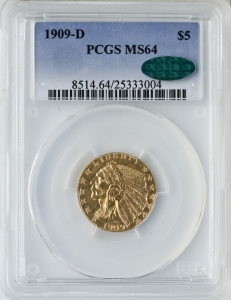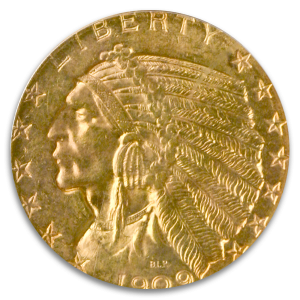$10 Liberty XF (Dates/Types Vary)
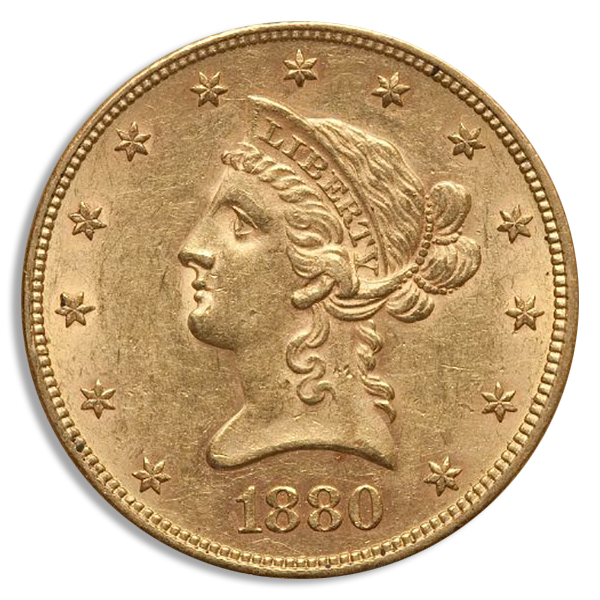


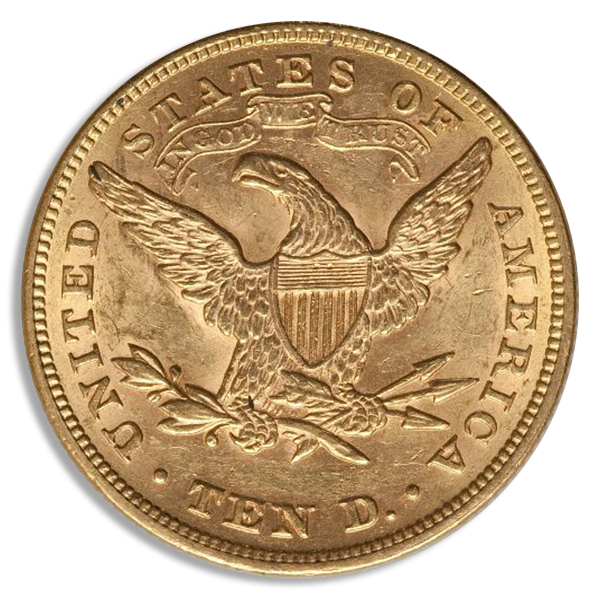

| The Liberty Eagle $10 gold coin, first minted in 1838, symbolizes a crucial period in U.S. monetary history. This era began with the Coinage Act of 1834, which redefined the gold-to-silver ratio, stabilizing the nation’s currency and encouraging the use of gold coins. Designed by Christian Gobrecht, the Liberty Eagle’s obverse showcases a left-facing portrait of Lady Liberty, wearing a coronet inscribed with "LIBERTY." Her hair is elegantly tied back, and thirteen stars representing the original colonies encircle her head. The minting year is prominently displayed below. This design, imbued with pride and elegance, reflects the nation’s ideals during the mid-19th century. The reverse of the Liberty Eagle features a heraldic eagle with its wings spread wide. The eagle grasps an olive branch in its right talon and arrows in its left, symbolizing the United States’ desire for peace and readiness for defense. A shield covers the eagle's chest, and the inscriptions "UNITED STATES OF AMERICA" and "TEN D." frame the design. Composed of 90% gold and 10% copper, the Liberty Eagle has a diameter of 27 mm and weighs 16.718 grams. Its durable composition and striking golden hue have attracted collectors for generations. The coin’s substantial gold content made it a reliable medium of exchange both domestically and internationally during its circulation. The Liberty Eagle was minted at various mints, including New Orleans, San Francisco, and Philadelphia. Roughly 5 million business strikes and 400 proofs were struck 1838-1866. The coin meltings of the 1930s, however, means that surviving high-grade specimens are rare. An extremely fine (XF) sample will show only light wear, mostly on the high points of the design. |
Comparison Chart






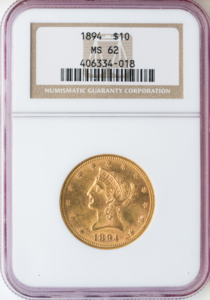
 Quick View
Quick View